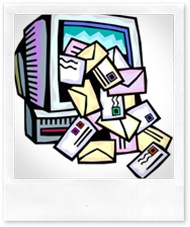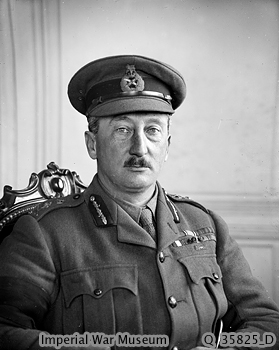Entries Tagged 'sales writing' ↓
April 30th, 2010 — copywriter, direct response copywriting, sales writing

This is always a tough question to answer when putting together a sales letter.
Every product is different so the answer will depend on what you are selling. But what if you are trying to sell an information product – something along the lines of an eBook or report, for example. How much information do you ‘give away’ about it?
What can I do for you today?
It’s a bit like when you go into the hairdressers – do you opt for the full colour or just highlights?
Well, if you think about it – you are offering an information product. It will be designed to help your reader in some way. It may be designed to make them money, save them money, change their lifestyle, improve their careers – the possibilities are endless.
Because it will ‘change their lives’ you don’t want to tell all in your sales letter. If you did, what would be the point in buying the product?
Ben Settle makes an interesting analogy in his recent post ‘Hollywood’s Billion Dollar Copywriting Secret’ . When a new film is due for release, it is preceded by a trailer. This is designed to whet your appetite. As such, it involves a combination of high action snippets from the film set to enlivening music with a compelling and dramatic voice over.
Basically what they are doing, is giving you the edited highlights of the whole film. It will be the most dramatic sections that you see and when strung together, it will produce a powerful image.
Therefore when you’re putting your sales letter together you need to look at the most powerful benefits your product has – what is the greatest impact it will have on your reader? What is the problem they desperately need a solution to and that your product will provide.
It is these highlights you need to extract and place in your sales letter. You have to give them just enough to make them want more.
Whatever you’re selling, always concentrate on the main benefits of your product. Your reader is going to want to know what your product will mean to them. Give them what they’re looking for and they’ll buy.
Sally Ormond – freelance copywriter
March 15th, 2010 — copywriter, copywriting tips, freelance copywriter, sales writing

It’s Mothers’ Day so I’m sat here in front of my computer working while the kids and my husband are glued to the TV watching the Bahrain Grand Prix.
Everything has to stop in this house when it’s F1 season – especially as Schumacher is making his big comeback this season (or at least he hopes!).
I’m not doubting that this year should see some amazing races. After all we have Hamilton and Button as team mates, Alonso looks strong and Vettel has got the first pole of the season.
So the big question is, has Schumacher still got what it takes to win races?
Moving on
You’re probably wondering what all of this has to do with copywriting. Well, if Schumacher drives as he used to when the cars were different and the rules were different, he’s not going to get very far.
Although he’s been working as a consultant for Ferrari since his retirement, he’s not actually been out there behind the wheel of an F1 car for sometime.
If he doesn’t move with the times. he’ll be left behind. And that is precisely what will happen with your copywriting if you just continue to churn out the usual stuff.
Freshen up or risk boredom
If you put out the same old sales message time and time again, your audience is going to get bored. Even though you may want to keep your colours and corporate image static, you need to alter your message and style.
Not every product or service you want to market is going to be successful if you market them in the same way. Think about your customers –what type of person are they? how old are they? what social standing do they have?
When you want to produce a new advert, sales letter, landing page etc., don’t just regurgitate what you’ve done before. Go for something different – make people stop and think “Oh, that’s different. I wander what that’s about.”
Giving a new take on your advertising keeps it fresh and arouses curiosity. If you can get your audience curious they’ll want to know more.
Tips to keep your copywriting fresh
There are a few techniques you can use to try and give your copy a new twist. It’s very easy to get stuck in a rut if you’ve been writing for the same product for a while.
Try one of these suggestions next time you are struggling to find an original angle:
- Browse through the websites of your competitors and see what they’re doing. This might help generate new and innovative ideas.
- Study headlines to find a new, stronger angle.
- Try to link your product to something topical – use a current news story to give a different slant to your marketing.
- Talk to friends and family about the product – they can sometimes be a great source of inspiration.
- When you’re out and about be aware of what’s around you, look at adverts, listen to people – you can pick up great ideas from casual conversations.
- Study news papers and magazines – keep cuttings of interesting articles and headlines that could be useful.
The world around you is full of fresh and interesting information that can be used within your marketing. All you have to do is be more aware.
Oh, and by the way – despite Vettel’s pole position, his car let him down, Alonso won. And Schumacher – 6th.
February 24th, 2010 — copywriter, copywriting tips, freelance copywriter, sales writing

As a copywriter, when I talk about sales copy I tell people to concentrate on the benefits.
After all, it is the benefits of your product or service that prospects want to know about as they will have a direct influence on their lives.
But if you’ve ever done any face to face selling you’ll also be aware of the other factors that you need to overcome – their reasons for not buying.
Sales literature is there to sell (no, really?), what’s more everyone knows that. Many people don’t like being sold to and so their guard is instantly raised when they read your letter, web page, brochure or other sales material.
Therefore you have to work out how to get round their objections.
Objection 1: “Too expensive”
Quite often this isn’t a genuine reason – it’s more of an excuse. A quick response that is supposed to get you running for the hills.
The best way round this objection is to show your product or service as an investment. The use of that word suggests there is a future pay back somewhere along the line.
You can do this by highlighting its benefits – how much money they’ll save or how much they’ll make.
Objection 2: “I don’t really need it”
Oh boy, now you’ve got some work to do.
If this objection is thrown at you it means one thing – you haven’t sold the benefits of your product well enough.
Go back over your website copy – have you told them what’s in it for them? Have you shown all the benefits. Make sure you haven’t confused your features with your benefits.
Is the copy talking to them? Does it evoke an emotional response? Have used a story to illustrate how it will benefit them in real life?
If your copy is benefits lead it should blow this objection clean out of the water because it will show them exactly why they need it.
Objection 3: “Hmmm, not sure. I need to talk to someone about it.”
Ah, the delaying tactic.
The best way to get round this one is by having a limited offer – it could be time limited (i.e. the special price is only available for the next 14 days), limited in number (i.e. only 5 left) etc.
No one likes to think they are missing out.
Of course the other way round this is by providing testimonials or case studies. By having real life examples of how your product has helped people will strengthen your sales message. They won’t need to talk to someone else when they have testimonials in front of them.
Being prepared is always having an answer
These three objections are the main ones you’ll come across. Head them off by ensuring your copy answers each of them.
The more objections you can satisfy the better. Utilise your experience – make a note of objections you come across and work solutions to these into your copy.
Sometimes, even though you’ve countered every argument someone can come up with, they still won’t buy. Sadly there is no known cure for stubbornness (yet).
October 9th, 2009 — copywriting, freelance copywriting, sales writing
Me, me, me, me.
I just thought I’d give you a bit of a clue as to what your reader is most concerned about when they are reading your copy.
Whatever you are trying to sell, your reader will only want to know what’s in it for them.
It’s human nature – if you want them to part with their hard earned cash, they have to benefit from it in someway.
Every copywriter should therefore be familiar with 3 market-proved elements that must appear in their copy to make the cash registers ring:
- promise a benefit
- make an offer
- deliver relevant news
Get it in your headline
The strongest headlines will contain all of these elements. which is quite a task.
Let’s start with the benefit. The easiest way to get this into your headline is to use this formula:
VERB + desirable quality (+ additional feature) = BENEFIT
So for example if you were looking to sell an anti wrinkle cream, your headline could look something like:
“Enjoy younger, softer skin in just 14 days”
For the offer you could include details of a reduction in price, or a limited quantity of the product. This will help create urgency – they have to buy or they’ll miss out! And no one likes to think they are missing out on a good thing.
So now our headline would look something like:
“Enjoy younger, softer skin in just 14 days – now with 50% extra free, available until the 31st October only.”
Eek! Quick or you’ll miss out!!! See where we’re going with this? Now suddenly we have created a sense of urgency because the offer won’t be about for ever.
The final stage is to add relevant news. This could be done by adding a question or adding credibility. So if we go back to our headline we would do something like this:
“Enjoy younger, softer skin in just 14 days with the new clinically proven formula – now with 50% extra free, available until the 31st October only.”
So now we have shown that it has been ‘clinically proven’ – we are adding credibility. More information about the approval can be shown in the body of your advert.
So hopefully you can see from this blog how important it is to write headlines that grab your readers attention and interest. If you are ever going to have a hope of them reading the rest of your ad, you’ve got to grab them immediately.
Sally Ormond, Briar Copywriting – freelance copywriter
September 3rd, 2009 — copywriting, freelance copywriting, sales writing

The good old British reserve seems to be holding back many businesses from getting the exposure they deserve.
A large part of the work I do is website copywriting. When I am sat with my clients going through the copy they need on their website I am often amazed at their lack of ‘shoutiness’ about their company’s achievements. Normally there is the obligatory page of testimonials which often are just a list of waffly quotes. Rarely do you find testimonials of substance.
Readers don’t want to see that you were ‘nice to work with’ they want to know how your product/service helped – what was the ROI?
Likewise with the ‘News’ pages that companies like so much. The problem is that what is on them is hardly ever news. Here you should list things like:
- Awards given
- Donations to chairty that you have made
- Large contracts you have won
- Success stories
And don’t forget to press release it too! It’s all well and good posting the information on your website but unless you get it out there in a press release who’s going to see it? If you have a blog, blog about it and link it back to your website – this generates those all important back links.
As Jon Morrow states in his recent post The Susan Boyle Guide to Being Loud and Proud, “The true giants of this world aren’t quiet. They are as loud as they are tall.”
So next time your company does something well SHOUT ABOUT IT.









